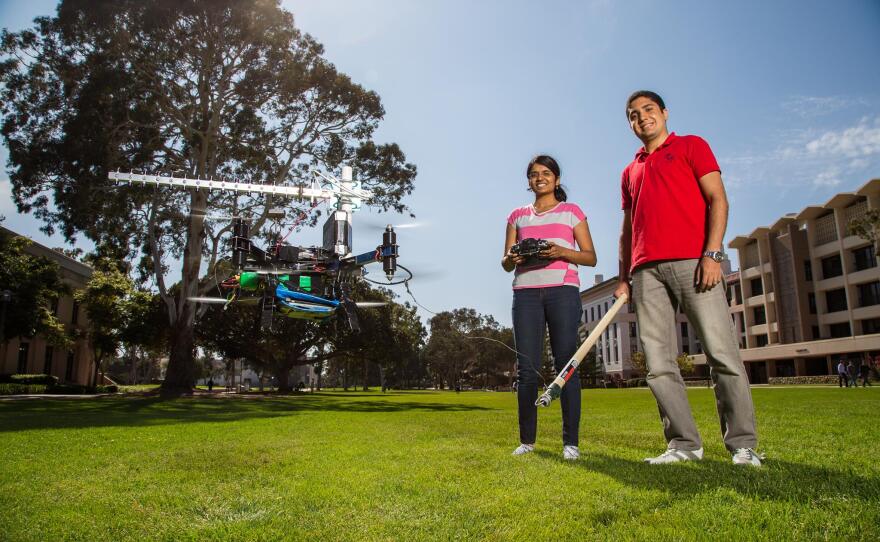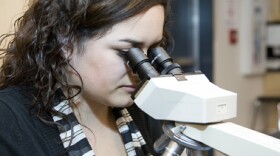Robots have been around for a long time. But, now, scientists are finding some amazing ways that they can help us. Imagine a robot that can do things humans can’t. South Coast researchers are developing robots with x-ray vision.
A robot that’s only about two feet tall can do some big things.
“If you use unmanned vehicles and existing wireless signals like WiFi to enable having x-ray vision and be able to see through walls. That’s something we’ve shown is possible,” said Yasamin Mostofi, an electrical and computer engineering professor at UC Santa Barbara, who does groundbreaking work in mobile sensor networks.
Her research is at the intersection of wireless communications and robotics. She and her students pioneered a methodology that allows robots to use WiFi signals to gain x-ray vision that could assist search and rescue teams in locating people trapped during a disaster or archeologists in finding fossils hidden behind rocks and brush during a dig. More recently, her lab has used drones working in tandem with WiFi signals to reveal what’s behind walls and generate three-dimensional, high resolution images.
“We’re using unmanned vehicles which allows me to optimize the positioning of my antennas. First of all, I can position them at several locations autonomously. And I can optimize their positioning. I can ask myself, ‘What are the best routes they can take that would make this job of imaging through walls easier?,'” she said.
So, to see this in action, we walked outside. The students positioned the robots around a brick wall that they use for testing. They turned the bots on and set up the wireless network.
Chitra Karanam, a PhD student in electrical engineering, explains how it works.
“By using this WiFi power measurements, the objects in that area leave their signatures on the measurements that are collected by the robots. Then, through an extensive modeling of the wireless measurements, we can then actually image the details of whatever objects are located in that area,” she said.
Karanam says the research is fascinating.
"WiFi signals are actually everywhere. It’s really interesting to see that there’s so much information we can actually tap into. By elegantly modeling what kind of patterns there are, we can obtain a lot of information about our environment,” she said.
This technology has far reaching implications. Mostofi explains how it potentially can be used in disaster relief.
“Search and rescue, for instance. Let’s say there’s an earthquake, a disaster happened. Having the ability to be able to sense an image through walls, through rubble, that’s an extra capability,” she said.
She says the robots may also be helpful for archeologists.
“A lot of times things of importance are buried under foliage. Can you use unmanned vehicles to be able to see through and see that there's something valuable underneath,” Mostofi said.
Electrical engineering PhD student Herbert Chai says he enjoys the interdisciplinary approach.
“We combine machine learning, decision-making optimization and robotics. I’m really excited that we are combining these several research fields together and we’re trying to push the research frontier,” he said.
Mostofi’s lab goes further than just robots that can see through concrete walls. These researchers are developing algorithms that allow a team of robots to work together to accomplish a task, and they’re also creating a methodology that allows robots to collaborate with humans to solve a problem.






